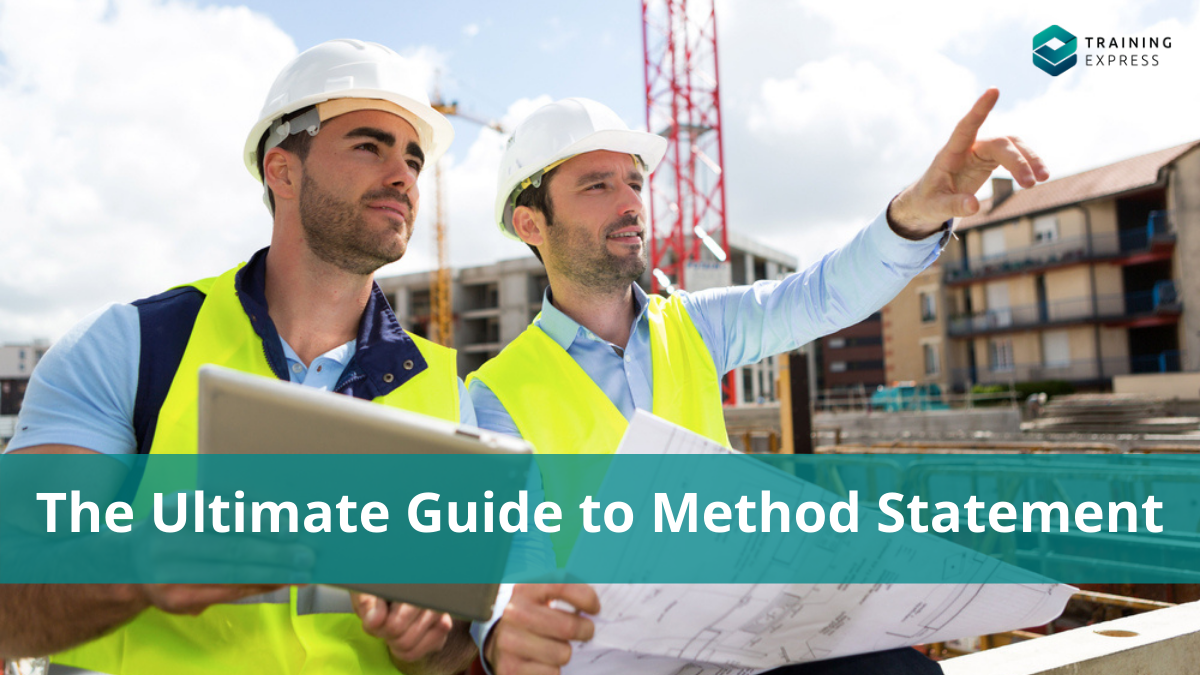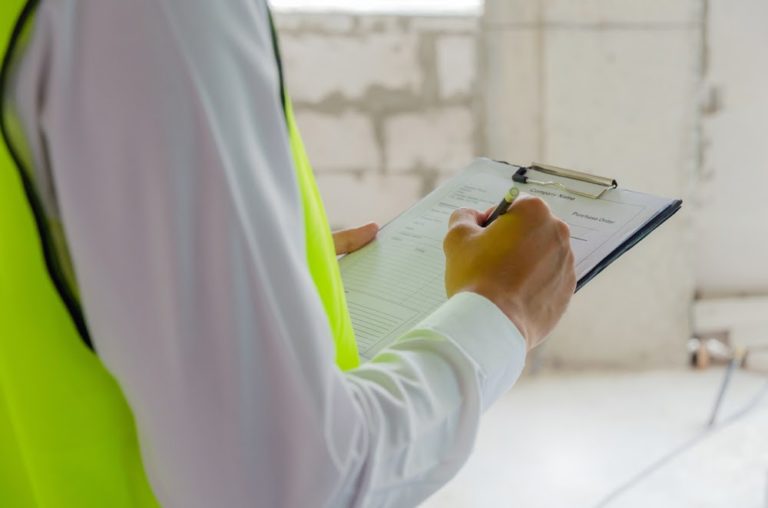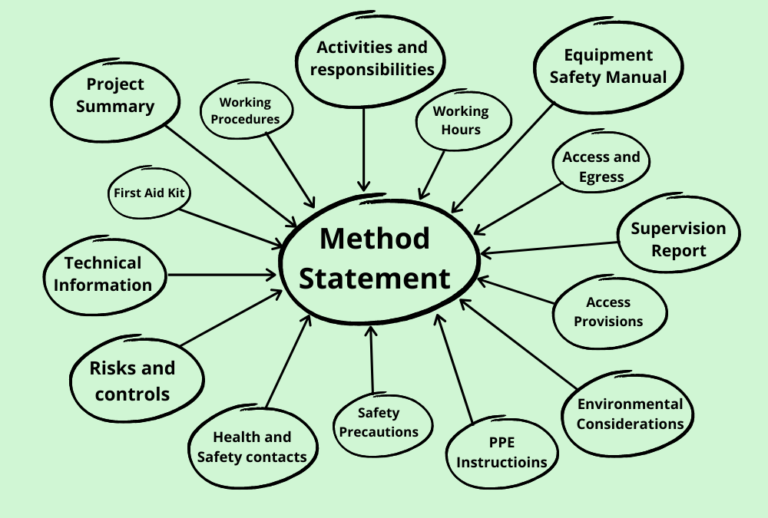

Are you a supervisor concerned about the safety of your construction team? Or perhaps you’re looking forward to ensuring a safe work environment? Whichever the case, you need a method statement. A method statement is a crucial management document. You are just one click away to read and learn about how to write a method statement today.
But do you know how to write a standard method statement? Even if you do, how effective will it be to ensure that mandatory precautions and control measures are well communicated to those involved? Well, this guide will provide you with all the necessary information you need to know about method statements.
Table of Contents
What is a method statement?
A method statement is a crucial management document. It details the steps workers must take to conduct a specific job safely. It benefits those who physically carry through the work in the construction sector.

The primary purpose of a method statement is to:
- Describe the safety precautions to prepare for risks identified in the risk assessment.
- Provide information about the Personal Protective Equipment (PPE) to use during any project.
- Assess the workers to control any hazard and mitigate the risks.
- Keep the workers safe on an ongoing task.
The method statement document identifies the potential risks that may arise during a particular task. Furthermore, a method statement can increase the awareness of the necessary precautions. It can also mitigate those risks and ensure workplace safety.
Why are method statements important?
According to a recent statistic in Great Britain, the fatal injury rate in the construction industries is three times higher than the all-industry rate. So, method statements are more crucial in the construction industry. Because everyday tasks involve high risks. And all unsafe work should always require a formal method statement before proceeding. For example:
- Work in confined spaces.
- Work underground.
- Demolition.
- Steel and formwork erection.
- Operating dangerous equipment.
- Handling of dangerous materials.
- Work in power lines, road or rail networks etc.
A standard method statement can provide a better control measure on the working sites. It’ll not only mitigate the risks but also protect everyone working on the site. The information on the method statement suggests control measures for safety. It also provides details on exactly how to implement them. Every construction worker must follow the method statements for safety precautions.
Who is Responsible for Writing it?
In general, the supervisors have the responsibility to ensure the safe and accurate execution of each task. So, they must create a method statement. They should also make sure that all the workers have access to a copy.
Moreover, to become a truly skilled professional, obtaining a solid education is essential. For assistance in excelling within civil engineering studies, individuals can turn to specialized writing services that offer civil engineering assignment help. These services can prove invaluable in acquiring a quality education and producing effective written works.

Whether you are self-employed or responsible for conducting risk assessments, you must write a proper method statement for your workplace for the following cases:
- To carry out high-risk works. For instance, operations that include working underground or at height.
- To carry through operations that include lifting or demolition.
- To work with electrics. Complex operations that involve installing, connecting, fitting or running a new supply.
Types of method statements
There are three types of method statements used on construction projects, according to Cooke and Williams.
1. Tender method statement
2. Construction work method statement
3. Safety method statement
There is a fourth type of method statement called a “Submission method statement”. It provides a potential client with the contractor’s competence and experience. This statement shows how to carry out the contract. It also identifies potential areas to save time and money on the project.
It’s crucial to know the goals of each type of method statement with their respective typical audience and key activities.
1. Tender method statements
This statement is intended to give the company an opportunity to show how they can provide good service. And it helps the clients, planners and business developers attain an insight into the company’s operation method. Tender method statements usually contain the following information:
- Construction operation.
- Types of resources (plant & labour).
- Construction management.
- Quality maintenance.
- The timescale of the contract.
- Company policies.
- General procedures, e.g., traffic management, site waste management, health and safety.
2. Construction method statement
Construction often requires risky and complex operations. And it requires a proper planning process. The construction method statement (CMS) provides the outlines for managing the construction works safely. The primary goal of the CMS is to provide documentation to the:
- Construction manager.
- Construction foreman.
- Supervisors.
- On-site construction workers.
- Technical staff.
- Sub-contractors.
It should be clear enough for all the workers to understand. Because only then it will help them perform their tasks effectively. The main objectives of the CMS are to:
- Check the operation duration.
- Scheme the best team formation for performing specific tasks.
- Construct logical sequence to plan activities in detail.
- Establish suitable communication method for all those working on site.
- Make proper progress report.
Based on the level of details, the CMS would typically include the following information:
- Operation plan.
- Entry and exit routes for both man and machine.
- Lighting.
- Plant and equipment.
- Emergency plans.
- Instructions on using safety equipment.
- Training and supervision.
3. Safety Method Statement
The safety method statement is considered a ‘live’ document. Any changes to this method statement are issued as the work progresses. However, the procedures of working and site conditions may vary from the initial one. Safety method statements are primarily for on-site operatives, e.g. supervisors, the foreman and the workers.
These documents ensure a standard health and safety plan for everyone working on the construction site. Other purposes of safety method statements are:
- Provide an appropriate approach to health and safety for dangerous activities.
- Give details on the personal protective equipment required on site.
- Inform about first-aid and emergency procedures.
- Assist in managing residual risks.
A standard safety method statement should include the following information:
- Work sequence.
- Supervision and monitoring.
- Potential hazards.
- Emergency procedures.
- First-aid.
- PPE schedules.
- Training controls.
What should be included in a method statement?
A method statement must be as brief and direct as possible. You may include diagrams if they help convey the information. Method statements are usually viewed by the workers and the clients. Your instructions should be clear and concise. The purpose is to make it easy for them to follow. Therefore, you must include all the relevant information about the project clearly. You can add the following information to a method statement:

1. A summary of the project. For example – project name, address, starting and expected completion dates.
2. Tasks and responsibilities.
3. Working hours.
4. Access provisions.
5. Work procedures.
6. Instruction on using specific equipment and materials.
7. Associated risks and controls.
8. Environmental considerations.
9. Technical information.
10. Supervision.
11. Safety precautions.
12. Instructions on using PPE.
13. Procedures on using the first-aid-kit.
14. Health and safety contacts.
You can also include layout drawings, site plans, and traffic management if you want.
How to write a good method statement?
Once you know what information to include in a statement, you may want to get right to it. But keep in mind that writing a method statement can be quite a time-consuming task. However, considering some basic questions will help you feel confident when writing this document. For instance:
- What are the tasks?
This includes a list of all the tasks and processes involved to complete the work. Also, you can mention the responsible staff or supervisors for each task.
- What work needs to be done?
This includes type and description of work, work location and problem statement. You can also include what equipment and tools to use.
- What are the hazards that may arise on-site?
This consists of a detailed list of hazards identified from the risk assessment of the project.
- What control measures are to be performed?
You can list all the safety control and preventive measures, including emergency procedures.
- Does the method statement need validation?
You may want to validate the method statement. You can do so by having all the staff, supervisors and workers sign off the document.
To help you get started, we have created a method statement template that you can download for free. Click the link below!
Risk assessment and method statement
Risk assessment and method statements are often confused with one another. That’s because both of these documents are common health and safety documents. However, there are some factors that distinguish a method statement from a risk assessment. For example:
- Control
Risk assessments identify and assess the risks involved in projects and provide control measures. On the other hand, method statements expand the control measures outlined in the risk assessment.
- Application
Risk assessment analyses all potential risks in a job to provide control measures. But the method statement shows how to do the job, provides instructions and safety protocols.
- Legality
A risk assessment is a legal obligation, whilst a method statement is not always required by the law.
Despite these key differences, method statement documents are used alongside risk assessments to ensure the overall safety of any project.
Method statements are usually written after the completion of risk assessments of any task. After conducting the risk assessment, you should use the information outlined in the risk assessment document. Information about potential risks is included in the method statement.
Heath and safety procedures that differ from method statements
Besides method statements, there are other health and safety procedures commonly used in performing a specific job or accomplishing a project. Each of these procedures or documents serve specific purposes despite some similarities. Therefore, you need to have a clear understanding of how they differ from each other and must not confuse them with method statements.
Permit to work
‘Permit to work’ refers to a systematic process. A process that ensures the frontline workers’ safety. It authorises controlled work in non-standard and risky conditions. The supervisor assesses the work and checks safety at each stage of the work.
The people involved in the job must sign the permit to show that they understand the risks and necessary precautions. Here is a list of common types of permit work system.
- Hot work permit. Work involving fire or sources of ignition such as welding, flame cutting and grinding.
- Breaking containment permit. When the work requires cutting into pipework containing dangerous substances.
- Electrical permit. This permit covers work that requires electrical or mechanical isolation.
- Ground disturbance permit. This permit is required for digging, trenching and excavating activities.
A ‘permit to work’ document coordinates different work activities and helps to avoid conflict as well.
Standard operating procedure (SOP)
A standard operating procedure is a set of detailed instructions to help workers carry out routine operations safely. The SOP provides necessary structures and directions for completing specific tasks. For example:
- Welding operations
- Confined space entry using a circular saw
- A manual process using heavy machinery etc.
SOPs are intended to achieve efficiency and quality output while maintaining safety protocols.
After developing an SOP, a method statement can then be used to detail each step required to perform the task.
Job safety analysis (JSA)
Job safety analysis refers to the practical method for reviewing a work step to evaluate and control the risk factors. The JSA identifies potential hazards and recommends the safest way to do the job. JSA also serves as a final check. It ensures that the SOP and risk assessment is suitable for the work.
The JSA document is usually completed before creating the method statement.
Additional duties regarding method statements
After developing and implementing a method statement, the responsible authority must ensure that all the personnel are following the rules. Duty holders (supervisors, subcontractor and builders) should also:
- Keep records of the method statement throughout the duration of the project.
- Make sure that the method statement is complied with by all the on-site workers.
- Stop the high-risk work if there is noncompliance with the method statement.
- Review the method statement from time to time and make amendments when necessary. For example, change of location, equipment etc.
Conclusion
A method statement serves as a set of instructions that help operate high-risk activities. It’s a part of careful planning and management. A professionally designed method statement shows that you’re committed to workplace safety. As part of the tendering process, most industries demand these documents. Moreover, they boost productivity while ensuring your staff’s, workers’, and customers’ safety.
Learn More
- Available Courses
- Career Bundles72
- Animal care5
- Law8
- Quality Licence Scheme Endorsed111
- Teaching13
- Teaching & Academics Primary27
- Accounting & Finance Primary29
- Training3
- Design9
- IT & Software43
- Healthcare124
- Marketing31
- Health and Safety400
- Construction48
- Electronics25
- Hospitality22
- Health and Social Care219
- Child Psychology37
- Management370
- Business Skills267
- First Aid70
- Employability264
- Safeguarding75
- Food Hygiene103
- Personal Development1272
 Food Hygiene
Food Hygiene Health & Safety
Health & Safety Safeguarding
Safeguarding First Aid
First Aid Business Skills
Business Skills Personal Development
Personal Development













